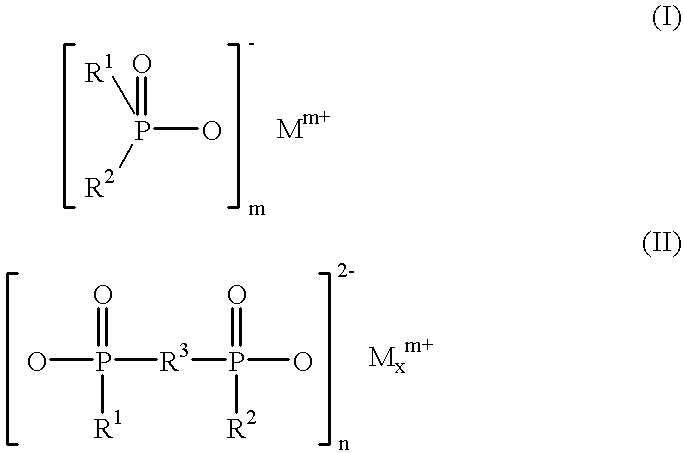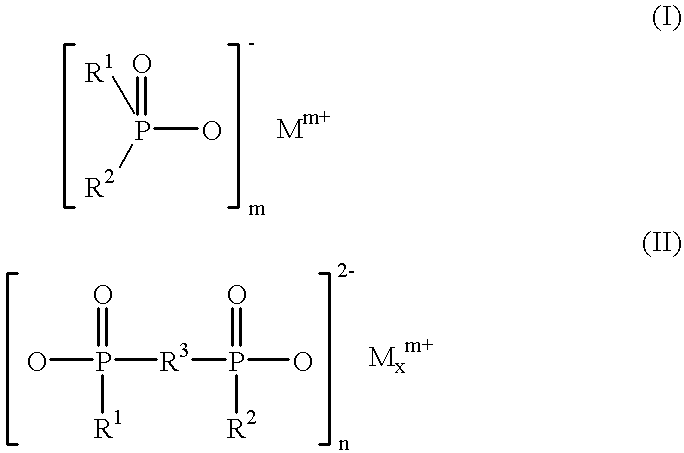Synergistic flameproofing combination for polymers
a flameproofing combination and polymer technology, applied in the direction of organic chemistry, organic chemistry, chemical apparatus and processes, etc., can solve the problems of limiting the potential use of products as flame retardants for plastics, and affecting the safety of flame retardants
- Summary
- Abstract
- Description
- Claims
- Application Information
AI Technical Summary
Problems solved by technology
Method used
Image
Examples
Embodiment Construction
1. Components Used
The flameproofing components (phosphinic acid salts, A) and optionally the synergistic agent (ammonium polyphosphate, B) were mixed, in the ratio stated in the Tables, with the polymer granules and possibly further additives and incorporated in a twin-screw extruder (type Leistritz LSM 30 / 34) at temperatures of 190-225.degree. C. (ABS) or at temperatures of 230-260.degree. C. (PA 6, PA 6-GV and PBT-GV). The homogenized polymer extrudate was taken off, cooled in a water bath and then granulated.
After sufficient drying, the molding materials were processed on an injection molding machine (type Toshiba IS 100 EN) at melt temperatures of 210-240.degree. C. (ABS) or of 240-270.degree. C. (PA 6, PA 6-GV and PBT-GV) to give test specimens, and testing for flame retardance and classification were carried out on the basis of the UL94 test (Underwriter Laboratories). The combustibility of the test specimens was rated by determining the oxygen index (LOI according to ASTM D 2...
PUM
| Property | Measurement | Unit |
|---|---|---|
| temperatures | aaaaa | aaaaa |
| temperatures | aaaaa | aaaaa |
| melt temperatures | aaaaa | aaaaa |
Abstract
Description
Claims
Application Information
 Login to View More
Login to View More - Generate Ideas
- Intellectual Property
- Life Sciences
- Materials
- Tech Scout
- Unparalleled Data Quality
- Higher Quality Content
- 60% Fewer Hallucinations
Browse by: Latest US Patents, China's latest patents, Technical Efficacy Thesaurus, Application Domain, Technology Topic, Popular Technical Reports.
© 2025 PatSnap. All rights reserved.Legal|Privacy policy|Modern Slavery Act Transparency Statement|Sitemap|About US| Contact US: help@patsnap.com



